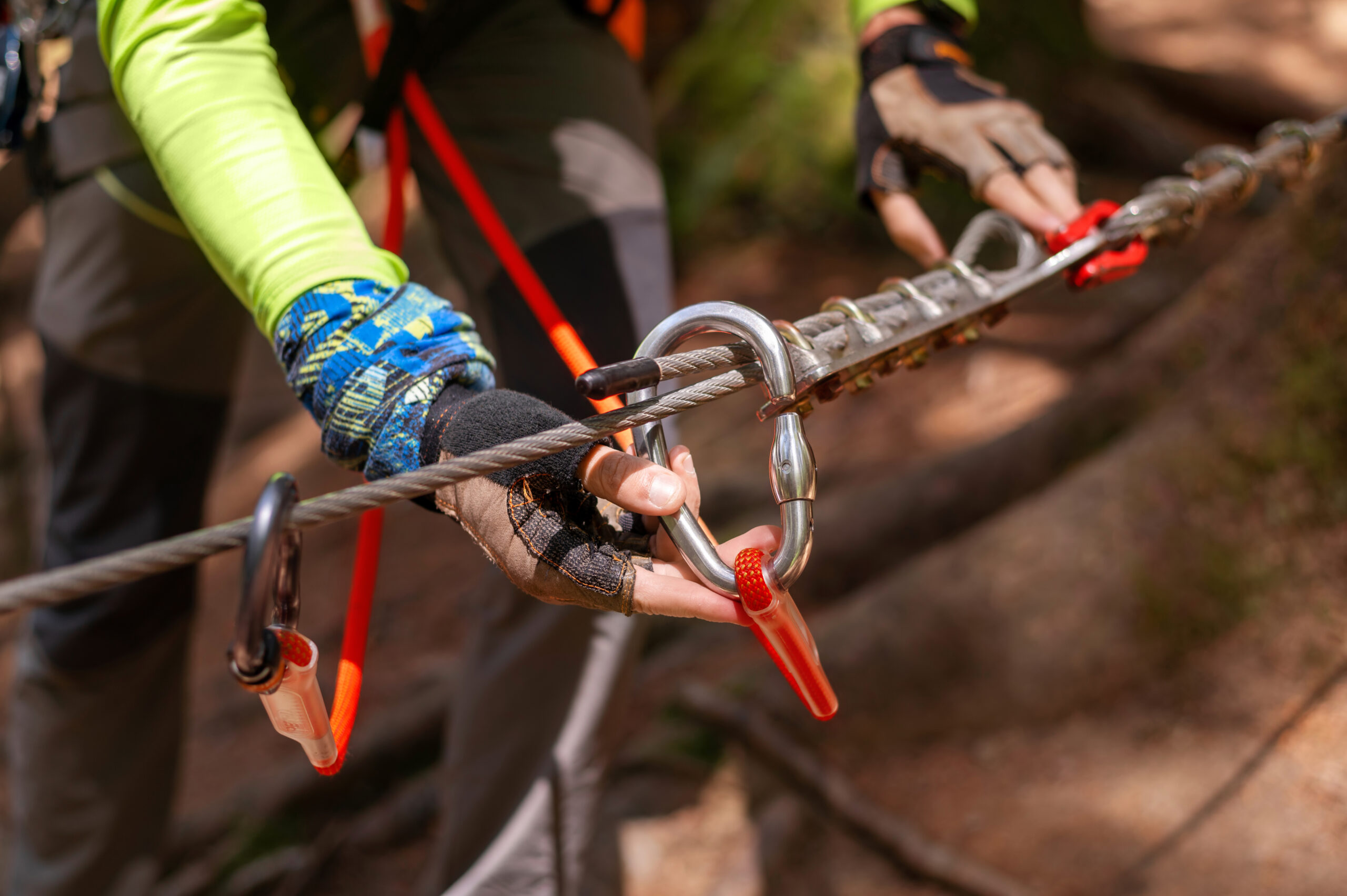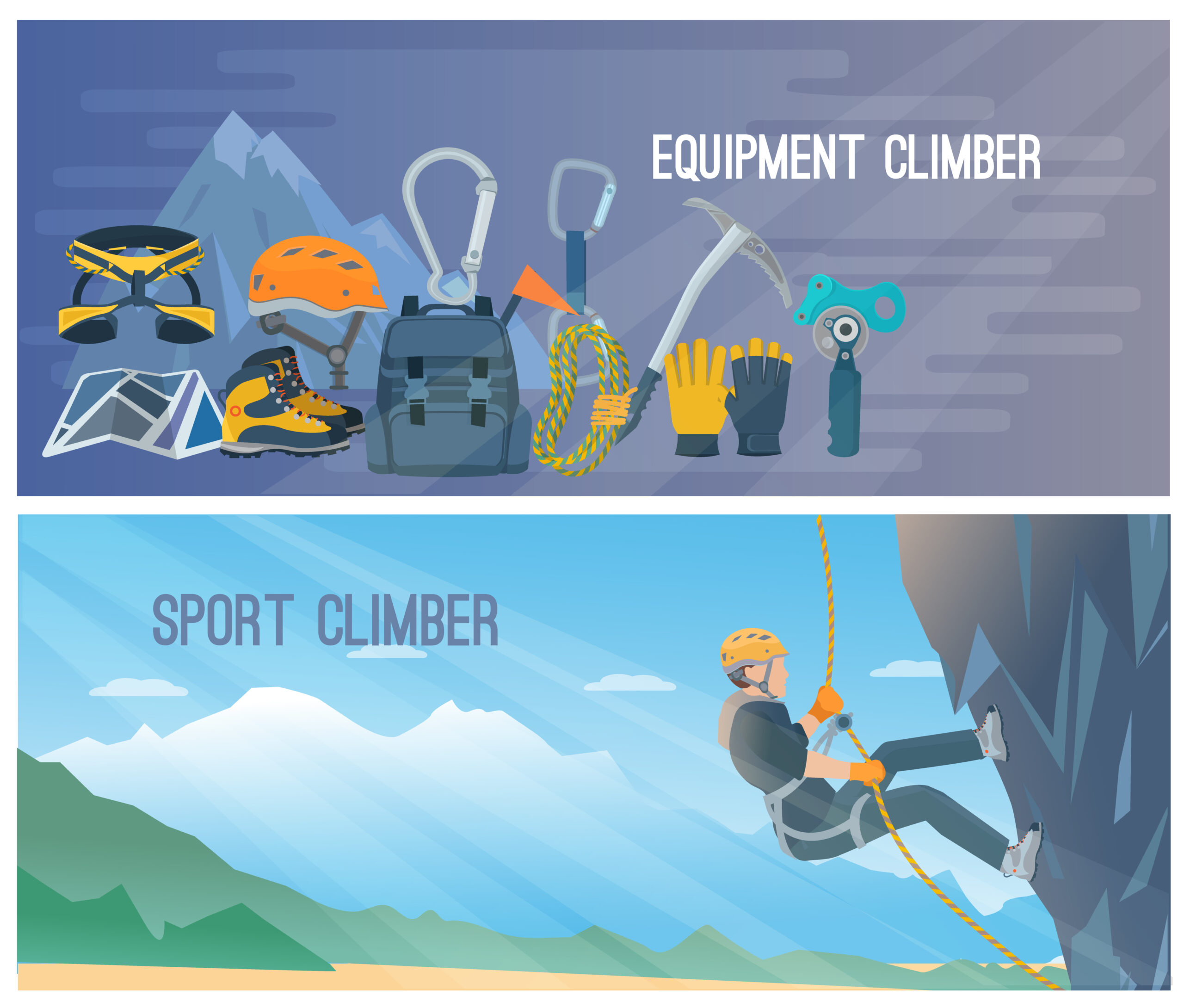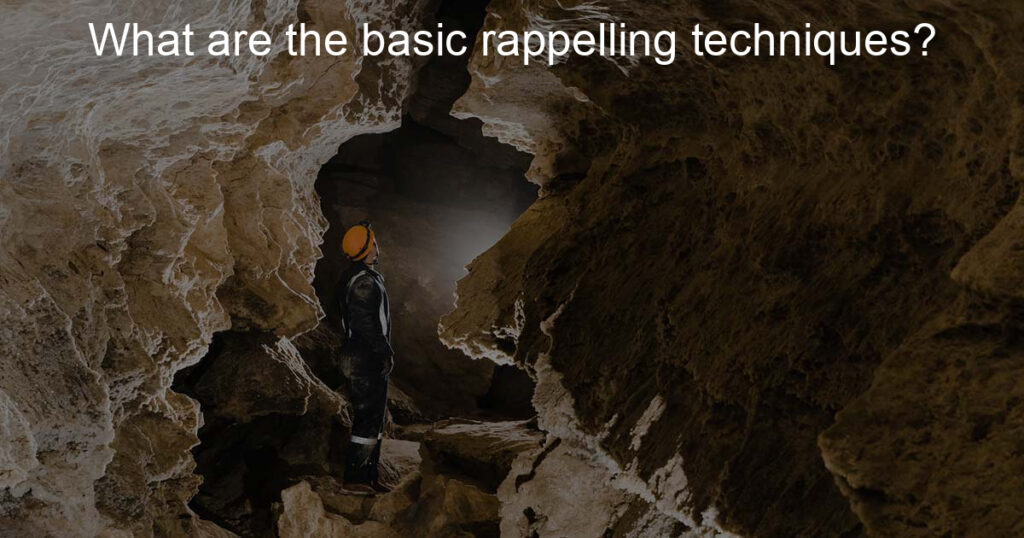Are you a brave explorer looking to push your limits? Then why not try rappelling into some of the world’s most incredible caves? As thrilling as it seems, there are several safety techniques and protective measures you must consider before any vertical descent.
Whether it’s the Carlsbad Caverns in the American Southwest or El Sótano de las Golondrinas in Mexico, having an understanding of basic rappelling skills is essential for anyone traversing these underground moments.
In this blog post, we will provide a comprehensive overview of all the fundamentals needed to successfully rappel safely – so read on and get ready to hit those rough trails with peace of mind!
What are the basic rappelling techniques?

Rappelling, also known as abseiling, is the process of descending a vertical surface using a rope attached to a harness. This technique is commonly used in outdoor activities such as rock climbing, caving, and canyoneering.
The proper rappelling techniques involve a set of skills that ensure a safe and efficient descent. For example, the rope should be anchored to a secure point at the top of the descent, and the rappeller should maintain their weight on the rope at all times. It’s crucial to have the correct equipment, including a helmet and gloves.
Overall, mastering rappelling techniques can enhance any outdoor adventure and ensure safety when descending steep surfaces.
Overview of Rappelling Basics

Rappelling, also known as abseiling, is a popular adventure sport that involves descending down a vertical surface using ropes and specialized equipment. It requires a combination of strength, balance, and technical skills.
Understanding basic techniques is essential, including how to tie a proper knot, how to properly secure the rope, and how to control your speed and direction while descending. One of the most important aspects of rappelling is safety, which should never be compromised.
Learning and following established protocols and techniques can help ensure a safe and enjoyable experience. With the right training, equipment, and approach, anyone can enjoy the thrill of rappelling while staying safe and in control.
| Technique | Description |
|---|---|
| Classic Rappel | The most commonly used technique, involves threading the rope through a rappel device attached to the harness and controlling your descent by releasing and pulling the rope. |
| Australian Rappel | A variation of the classic technique, where you face the surface and use your feet to control your descent. |
| Carabiner Brake | A simple technique that involves using a carabiner as a brake by attaching it to the rope and holding it in place with your body weight. |
| Munter Hitch | A technique that involves tying a knot in the rope to create a friction brake and controlling your descent with your hands. |
| Dülfersitz | A technique used for shorter descents or emergency situations, where you sit on the rope and use your body weight to control your descent. |
| Hip Rappel | A technique used for narrow spaces or when carrying a backpack, where you sit on the rope with the rope passing under one leg and over the opposite shoulder. |
| Releasable Rappel | A technique used for longer descents, where a releasable knot is used to allow for stops along the way and to prevent overheating of the rope. |
| Tandem Rappel | A technique used for carrying extra weight or for inexperienced individuals, where two people descend together, one controlling the descent while the other focuses on balance and safety. |
Note: These techniques are not exhaustive and may vary depending on the specific situation and location. It is always important to receive proper training and instruction from a certified instructor or experienced guide before attempting any rappelling technique.
How to Select the Appropriate Gear?
When it comes to rappelling, having the appropriate gear can mean the difference between a safe and successful descent, or a dangerous and potentially deadly one. That’s why it’s important to carefully select the gear that’s right for you and the particular rappelling techniques you plan to use.
Whether you’re a beginner or a seasoned pro, it’s essential to consider factors such as the weight and size of your gear, the durability and strength of your ropes and harness, and the reliability of your belay device. By taking the time to choose the right gear, you can feel confident and secure as you navigate down cliffs, rocks, and other challenging terrain.
Understand Your Knots and Attaching Them to the Rope
Understanding your knots and attaching them to the rope is crucial when it comes to rappelling techniques. As a rappelling enthusiast, it’s important to know how to tie the proper knots and make sure they are securely attached to the rope.
Some common knots used in rappelling include the figure-eight knot, bowline knot, and clove hitch knot. Learning the proper technique for each of these knots will ensure that you have a safe and enjoyable experience while rappelling. It’s also important to double-check your knots before rappelling to avoid any accidents.
So take the time to learn your knots and attach them securely to the rope before taking the plunge!
Positioning Yourself Correctly at the Edge
When it comes to the world of rock climbing and rappelling, ensuring that you are positioned correctly at the edge can make all the difference in terms of safety and successful navigation. Rappelling techniques are an essential part of any climber’s repertoire, but without proper positioning at the edge, even the most experienced climber will find themselves in a potentially dangerous situation.
By taking the time to familiarize yourself with the proper techniques and safety precautions, you can ensure that your next rappelling experience is both successful and enjoyable. Remember, positioning yourself correctly at the edge is one of the most important steps you can take to ensure a safe journey down.
Controlling Your Descent with a Belay Device
If you’re into climbing, chances are that you already know about rappelling techniques and how crucial they are for your safety. With a belay device, which is essentially a mechanical tool that creates friction to control the rope’s speed, you can prevent yourself from taking a dangerous fall and maintain maximum control while descending.
There are several types of belay devices available on the market, so it’s essential to choose the one that suits your needs the most. Keep in mind that when using a belay device, you’ll need to master your technique and be familiar with the equipment to avoid any mishaps.
By learning and practicing these techniques, you’ll be able to feel confident in controlling your descent every time you go climbing.
Finishing Up with Counterweight and Pulling Down on the Rope
As you come to the end of your rappel, you’ll need to master the techniques of counterweighting and pulling down on the rope. These skills come into play when you’re just a few feet off the ground and need to take the final steps to touch down.
With counterweighting, you’ll adjust your body position so that you’re leaning back and away from the wall, giving you more control over your descent. Then, when you’re ready to land, you’ll pull down on the rope, using your weight to bring yourself to a gentle stop.
How do you rappel step by step?

Rappelling is a technique used in rock climbing and canyoneering where you descend a cliff face or steep slope using a rope anchored at the top. The process can be intimidating, but with proper training and equipment, it can be a thrilling way to explore the outdoors.
Here’s how it’s done in simple steps: First, attach your harness and helmet, then tie the rope to your harness and secure it to a sturdy anchor point at the top of the cliff. Next, create a friction system using a device like a belay device or a Munter hitch.
As you descend, use your dominant hand to control the friction by pulling the rope towards your hip, and use your non-dominant hand to guide the rope. Place your feet firmly against the wall and lean back, allowing the rope and friction system to control your descent.
Keep your eyes focused downwards and take it slow and steady. When you reach the bottom, detach your rope from the anchor.
Wrapping up
When it comes to rappelling, there is nothing quite like the thrill of facing your fears and trusting in your skills. As long as you practice, take every step with a plan, and stay safe by double-checking all equipment—there is no limit to the places you can explore!
Whether you are an advanced rappeller or a newcomer to the sport, these basic techniques will provide you with a great foundation to build. With the right determination and drive, rappelling will quickly become one of your favorite activities. So if you’re ready for an adventure that takes your exploration up a notch – give it a try today!














